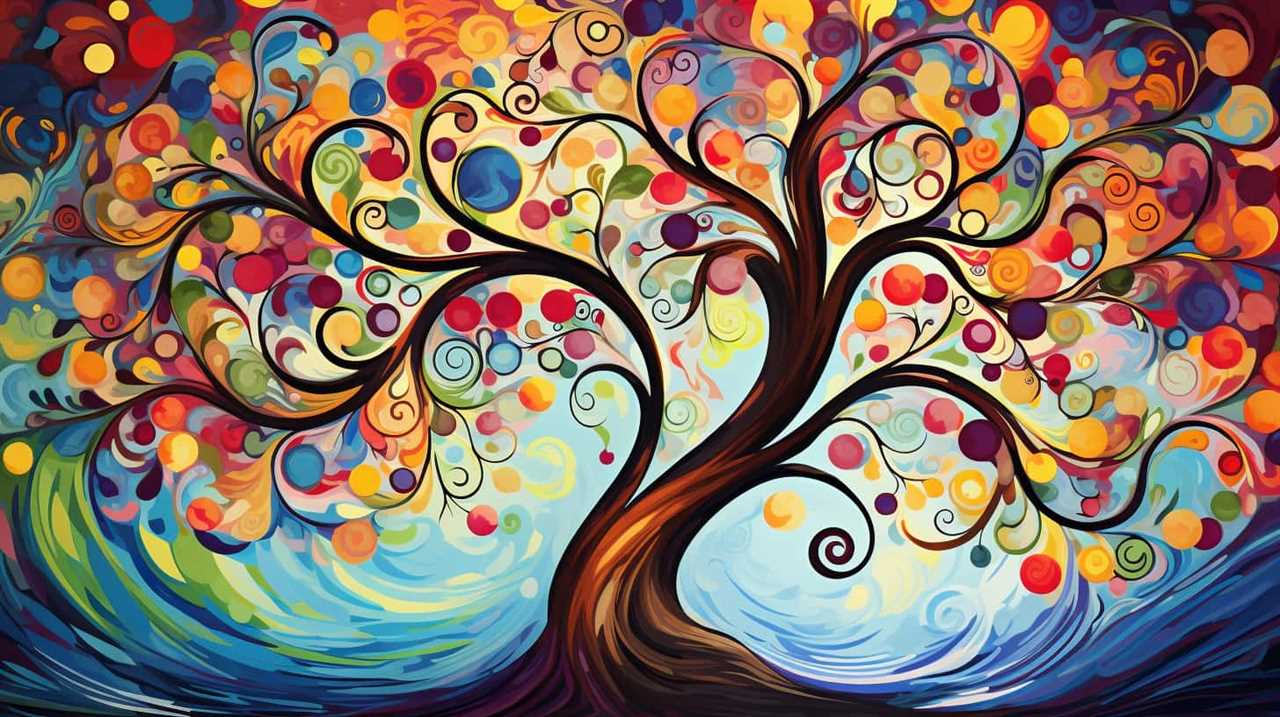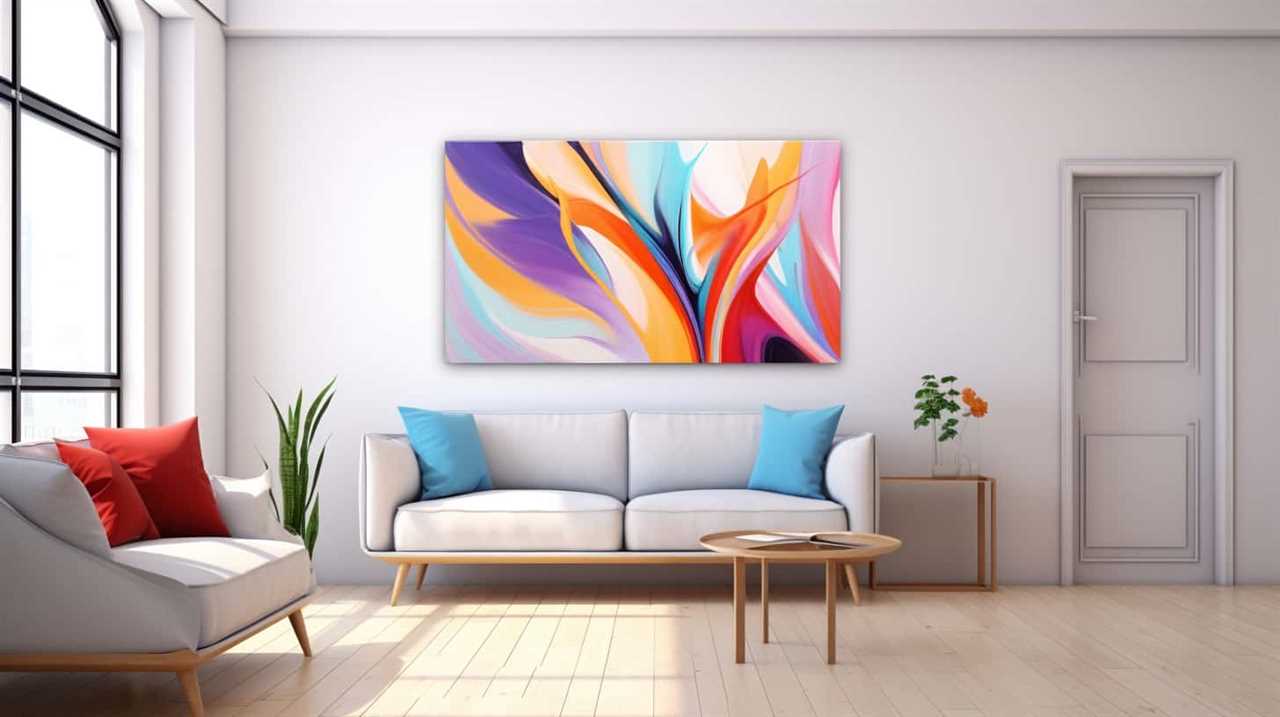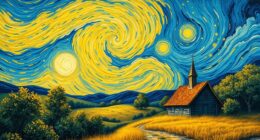Do you believe in the idea that ‘imitation is the sincerest form of flattery’? While this saying may hold true in certain cases, when it comes to artistic expression, being authentic is the key to unlocking innovation.
In a world where creativity is highly valued, it is essential to push boundaries and challenge the status quo. Originality breathes life into art, infusing it with fresh perspectives and unique ideas. It is through being original that artists find inspiration, as they explore uncharted territories and express their individuality.
When you embrace originality in your artistic practice, you open yourself up to endless possibilities and the potential for greatness. So, let us delve into the importance of originality in artistic inspiration and discover how it can fuel your creative journey.
Key Takeaways
- Originality in art allows artists to express their individuality and perspective, pushing the boundaries of creativity.
- It sparks inspiration and drives the artistic process by challenging artists to explore new perspectives and techniques.
- Originality contributes to personal and artistic growth, expanding skills and establishing a connection with viewers.
- Embracing unconventional approaches and mediums cultivates unique artistic expression and pushes the boundaries of creativity.
The Definition of Originality
To understand the importance of originality in artistic inspiration, you must first grasp the precise definition of originality. Originality refers to the quality of being unique and innovative. It’s the ability to create something new and different, departing from the conventional and familiar.
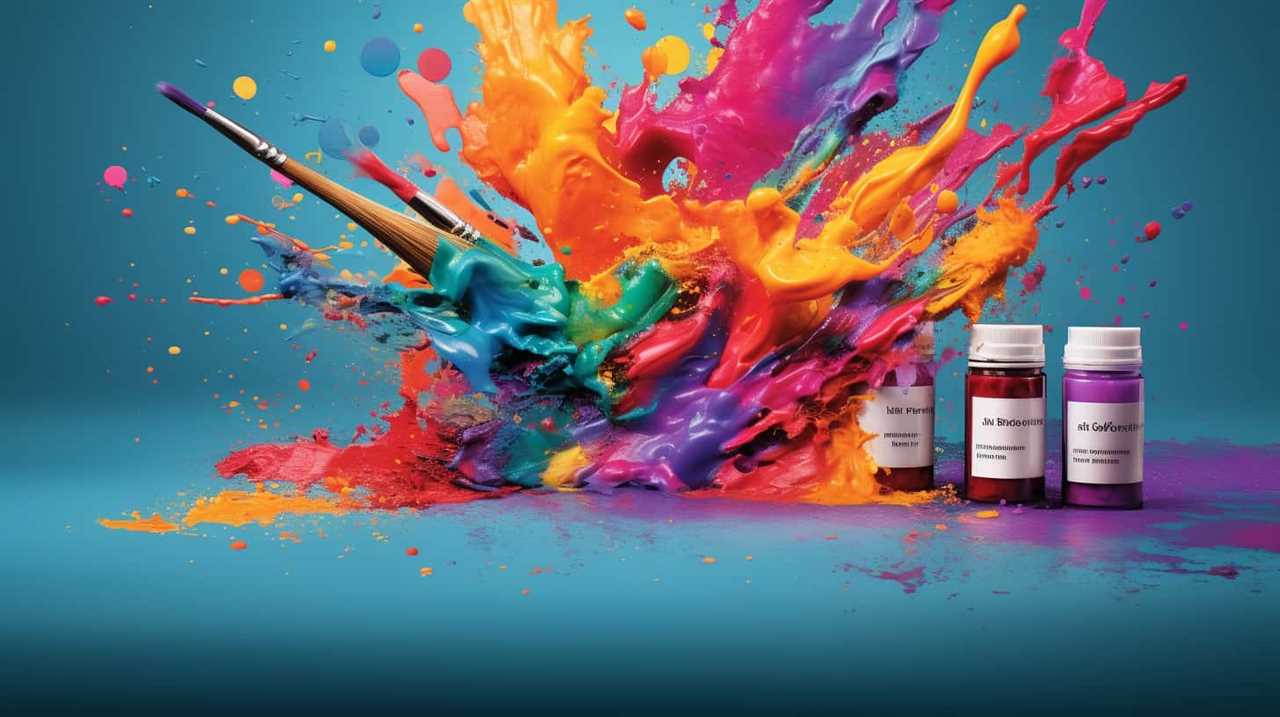
In the realm of art, originality is the driving force behind creativity and the catalyst for pushing the boundaries of artistic expression.
The nature of originality lies in its ability to challenge existing norms and conventions. It encourages artists to break free from the constraints of tradition and explore new possibilities. Originality calls for fresh perspectives, unconventional techniques, and uncharted territories in artistic interpretation. It pushes artists to think outside the box and experiment with unique ideas, materials, and concepts.
The impact of originality on artistic interpretation can’t be overstated. It breathes life into art, injecting it with vitality and relevance. Originality enables artists to communicate their unique vision and personal experiences, creating a deep connection with the audience. It sparks curiosity, provokes emotions, and stimulates intellectual engagement. Without originality, art becomes stagnant, repetitive, and devoid of meaning.
The Role of Originality in Art
When it comes to art, originality plays a crucial role in shaping artistic inspiration. Artists strive to create something unique and innovative that hasn’t been seen or experienced before.

Originality sets an artist apart from imitators and allows them to express their individuality and perspective. It challenges the boundaries of creativity and pushes the boundaries of what’s considered possible in the world of art.
Importance of Artistic Originality
Artistic originality plays a vital role in inspiring artists to create unique and captivating works of art. Cultivating artistic authenticity and nurturing individual creative voice are essential for artists who strive for innovation and want to make a lasting impact in the art world. When artists embrace their own originality, they bring forth fresh perspectives and push the boundaries of traditional art forms. This results in groundbreaking and thought-provoking pieces that captivate audiences and spark new conversations. To illustrate the importance of artistic originality, let’s consider the following table:
| Traditional Art | Original Art |
|---|---|
| Repetitive | Innovative |
| Conventional | Avant-garde |
| Predictable | Surprising |
| Derivative | Unconventional |
| Familiar | Unforgettable |
Originality Vs. Imitation
While it may be tempting to imitate the works of others, originality is crucial in art as it allows artists to express their unique perspectives and push the boundaries of creativity.
In music, originality is the key to making a mark in the industry. Audiences crave fresh sounds and innovative compositions that capture their attention and evoke emotions. By creating music that’s truly their own, artists can establish their individuality and leave a lasting impact on listeners.
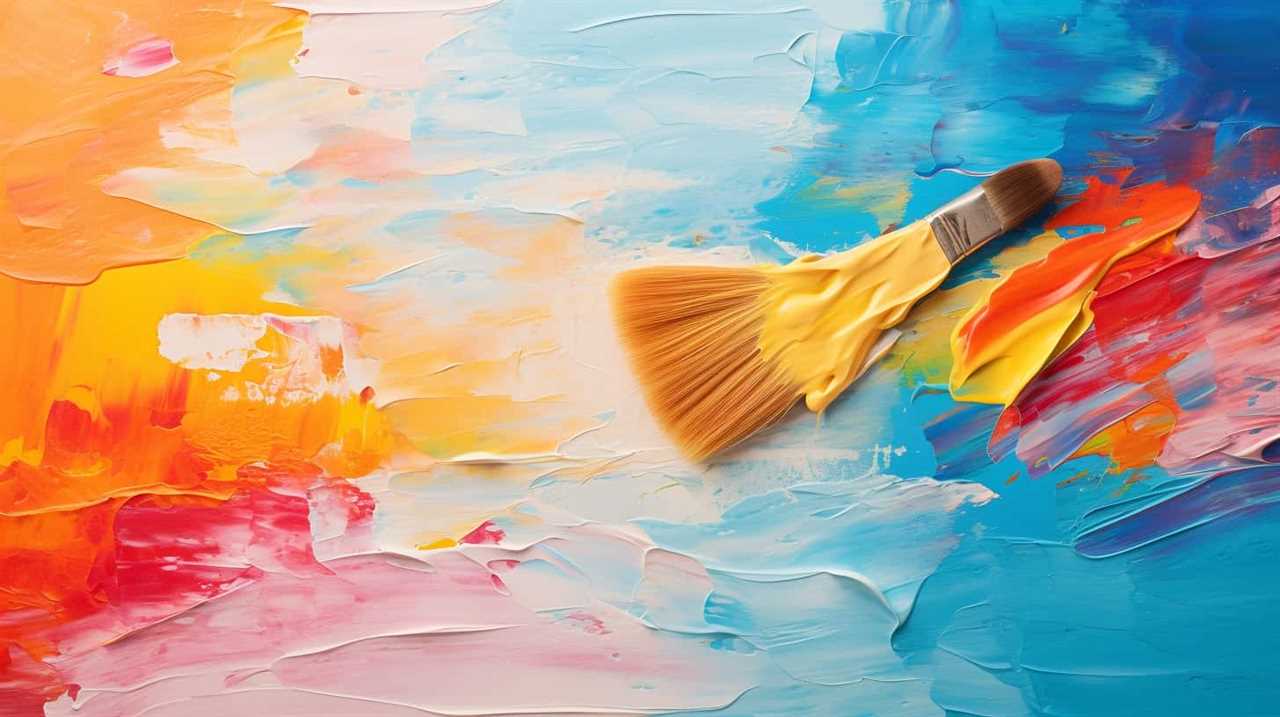
Similarly, in fashion, originality is essential for designers to stand out in a saturated market. Unique designs that challenge traditional norms and introduce new trends not only captivate consumers but also inspire other creators.
Originality in both music and fashion is a powerful tool that propels the industries forward and drives innovation.
How Originality Sparks Inspiration
When it comes to artistic inspiration, originality plays a crucial role in sparking creativity. Unique ideas have the power to captivate and intrigue, igniting a sense of curiosity and pushing artists to think outside the box.
The freshness and novelty of originality challenge artists to explore new perspectives, experiment with different techniques, and push the boundaries of their craft. By embracing originality, artists are able to tap into a wellspring of inspiration that fuels their creative process.

Importance of Unique Ideas
To ignite your creative fire, seek out and embrace the power of unique ideas. The importance of unique ideas can’t be overstated when it comes to sparking creative inspiration. These original and innovative concepts have the ability to captivate and engage an audience, setting your work apart from the rest.
Here are three reasons why unique ideas are essential for inspiring creativity:
- Uniqueness grabs attention: When you present something that’s truly original, people can’t help but take notice. Unique ideas have a way of capturing attention and standing out in a sea of sameness.
- Fresh perspectives inspire new insights: By exploring and embracing unique ideas, you invite fresh perspectives into your creative process. This can lead to new insights, pushing you to think outside the box and approach your work from a different angle.
- Differentiation fosters innovation: In a world saturated with content, unique ideas are the key to differentiation. By embracing originality, you set yourself apart from the competition and create opportunities for innovation and growth.
Embracing unique ideas isn’t only crucial for inspiring creativity, but it also allows you to leave a lasting impact on your audience. So, don’t shy away from exploring the power of originality and let your imagination soar.
Originality Fuels Creativity
Embrace the power of originality for it’s the fuel that ignites creativity and sparks inspiration. Originality plays a crucial role in the artistic process, driving the evolution of art and pushing boundaries. When artists strive to create something unique and different, they’re forced to think outside the box, challenging conventional norms and established norms. This process of pushing boundaries and exploring new ideas leads to the birth of innovative and groundbreaking works of art.
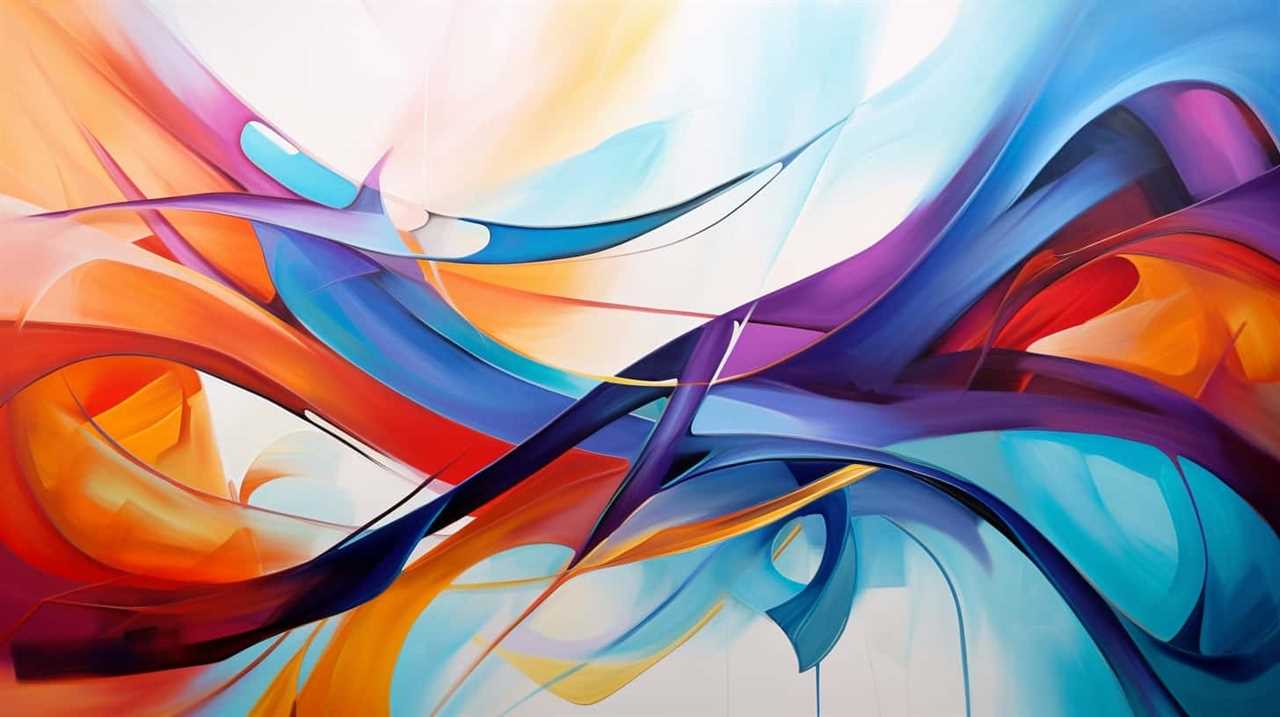
Originality in the artistic process isn’t just about creating something new; it’s about infusing personal experiences, perspectives, and emotions into the artwork. This personal touch adds depth and authenticity, resonating with audiences in a profound way. By embracing originality, artists can tap into their innermost thoughts and feelings, resulting in art that isn’t only visually captivating but also emotionally powerful.
Furthermore, originality fuels artistic evolution. Artists who continually strive to be original and innovative inspire others to do the same. The pursuit of originality sets in motion a chain reaction, where artists build upon each other’s ideas, pushing the boundaries of what’s considered possible. This constant drive for originality fuels artistic growth and propels the art world forward.
The Impact of Originality on Artistic Expression
You can enhance your artistic expression by incorporating originality in your work. The impact of originality on artistic expression is profound, as it allows you to push boundaries, explore new ideas, and create unique and memorable pieces.
Here are three ways in which originality can greatly influence your artistic expression:

- Uniqueness: Originality sets your work apart from others, making it stand out in a crowded artistic landscape. By infusing your creations with fresh and innovative ideas, you can captivate your audience and leave a lasting impression. Originality allows you to create something that hasn’t been seen or experienced before, giving your work a unique identity.
- Authenticity: Originality in artistic expression allows you to stay true to yourself and your artistic vision. It enables you to express your thoughts, emotions, and experiences in a way that’s authentic and genuine. By embracing originality, you can create art that’s a true reflection of who you’re as an artist, allowing your work to resonate deeply with others.
- Artistic growth: Originality is closely tied to artistic growth. By constantly pushing the boundaries of your creativity and exploring new ideas, you can expand your artistic skills and evolve as an artist. The pursuit of originality challenges you to think outside the box, experiment with different techniques, and take artistic risks. This continuous exploration and growth ultimately lead to the development of a unique artistic voice and style.
Incorporating originality in your artistic expression not only helps you create remarkable and memorable artwork, but it also contributes to your personal and artistic growth. By embracing originality, you can unleash your full creative potential and leave a lasting impact on the world of art.
The Connection Between Originality and Creativity
Incorporating originality in your artistic expression can ignite a powerful connection between originality and creativity that fuels your artistic inspiration. Originality serves as a catalyst for innovation, pushing the boundaries of what’s already been done and inspiring new ideas and perspectives. It’s through the exploration of originality that artists can foster creative thinking and bring forth truly innovative works of art.
The link between originality and innovation is undeniable. When artists strive to create something unique and groundbreaking, they’re forced to think outside the box, break away from conventions, and challenge the status quo. This process of pushing boundaries and breaking free from the constraints of traditional art forms is what drives creativity to new heights.
By fostering creative thinking through originality, artists open themselves up to endless possibilities. They’re no longer confined to the limitations of what’s already been done, but instead, they’re free to explore uncharted territories and create art that’s truly their own. This not only allows for personal growth and self-expression but also contributes to the overall evolution of the art world.
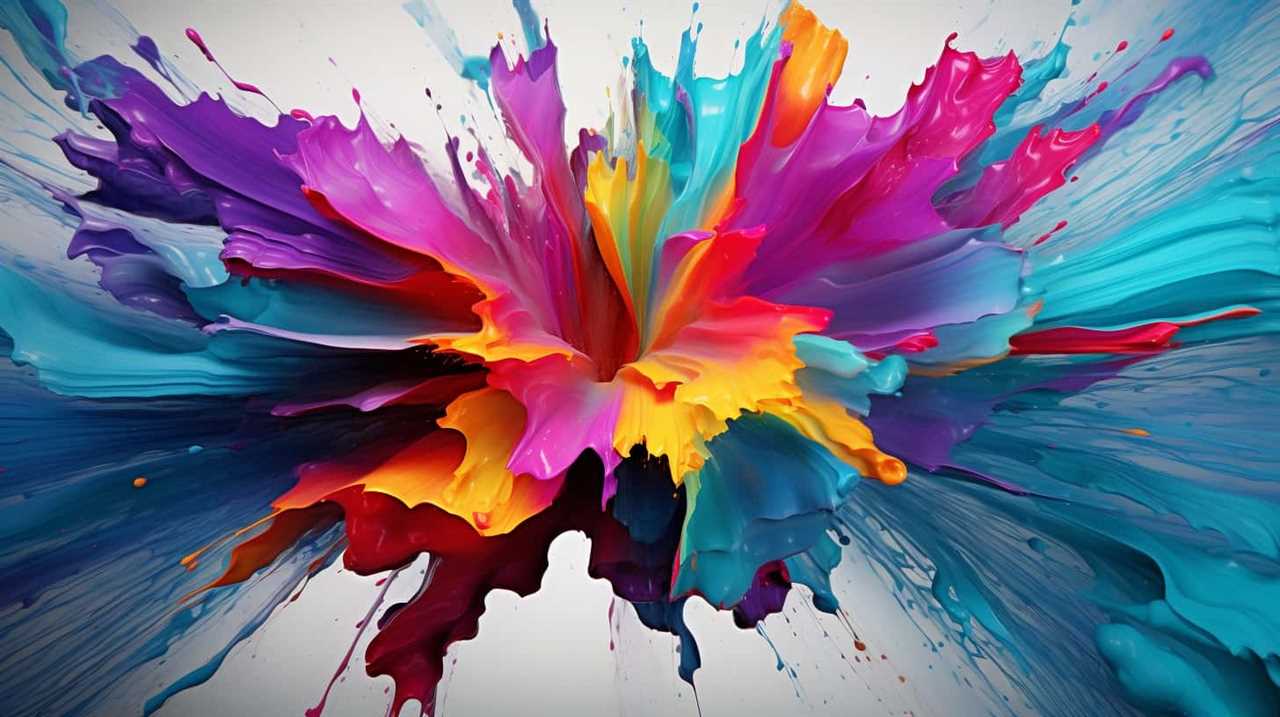
The Influence of Originality on Artistic Growth
One key factor in artistic growth is the influence of originality. When artists strive to create something truly unique and authentic, it has a profound impact on their artistic identity and overall development.
Here are three ways in which originality influences artistic growth:
- Fosters artistic exploration: Originality encourages artists to push boundaries and explore new ideas, techniques, and perspectives. By embracing their unique voice, artists are more likely to experiment and take risks, which leads to personal and artistic growth. This constant exploration allows artists to expand their skills, refine their style, and discover new possibilities.
- Cultivates artistic authenticity: Originality is closely tied to authenticity in art. When artists express their true selves through their work, it resonates with audiences on a deeper level. By staying true to their own vision, artists develop a distinct artistic identity and establish a meaningful connection with viewers. This authenticity not only enhances the artist’s growth but also inspires others to embrace their own uniqueness.
- Challenges artistic conventions: Originality challenges the status quo and breaks away from traditional artistic conventions. By defying expectations and creating something fresh and innovative, artists contribute to the evolution of art as a whole. This process of challenging conventions and pushing boundaries not only fuels artistic growth but also inspires others to think outside the box and explore new possibilities.
Originality as a Catalyst for Innovation
Originality serves as a driving force for innovation in the artistic realm. It’s the catalyst that propels artists to push boundaries, challenge norms, and create something new and unique. When artists embrace their originality, they open themselves up to a world of possibilities, allowing their creativity to flourish and inspire others.
The power of unique inspiration can’t be underestimated. When artists bring their own distinct perspective, experiences, and ideas to their work, they inject it with a freshness and vitality that captivates audiences. Originality sparks curiosity and engages the imagination, leading to groundbreaking ideas and innovative approaches.

Innovation is essential for progress and growth in any field, and the arts are no exception. By embracing originality and using it as a catalyst for innovation, artists can create groundbreaking works that challenge conventions and redefine what’s possible. They can break free from the constraints of tradition and pave the way for new artistic movements.
Furthermore, originality as a catalyst for innovation not only benefits individual artists but also the entire artistic community. It encourages collaboration, as artists with unique perspectives and ideas come together to create something truly groundbreaking. It fosters a culture of continuous improvement and pushes the boundaries of what’s considered possible in the artistic realm.
Originality and the Exploration of New Ideas
Explore new ideas by embracing your unique perspective and pushing the boundaries of artistic convention. In the pursuit of originality, it’s crucial to venture into uncharted territory and challenge the status quo. By doing so, you not only expand your own creative horizons but also contribute to the evolution of art as a whole.
Consider the following three strategies for exploring new ideas and pushing boundaries in your artistic practice:
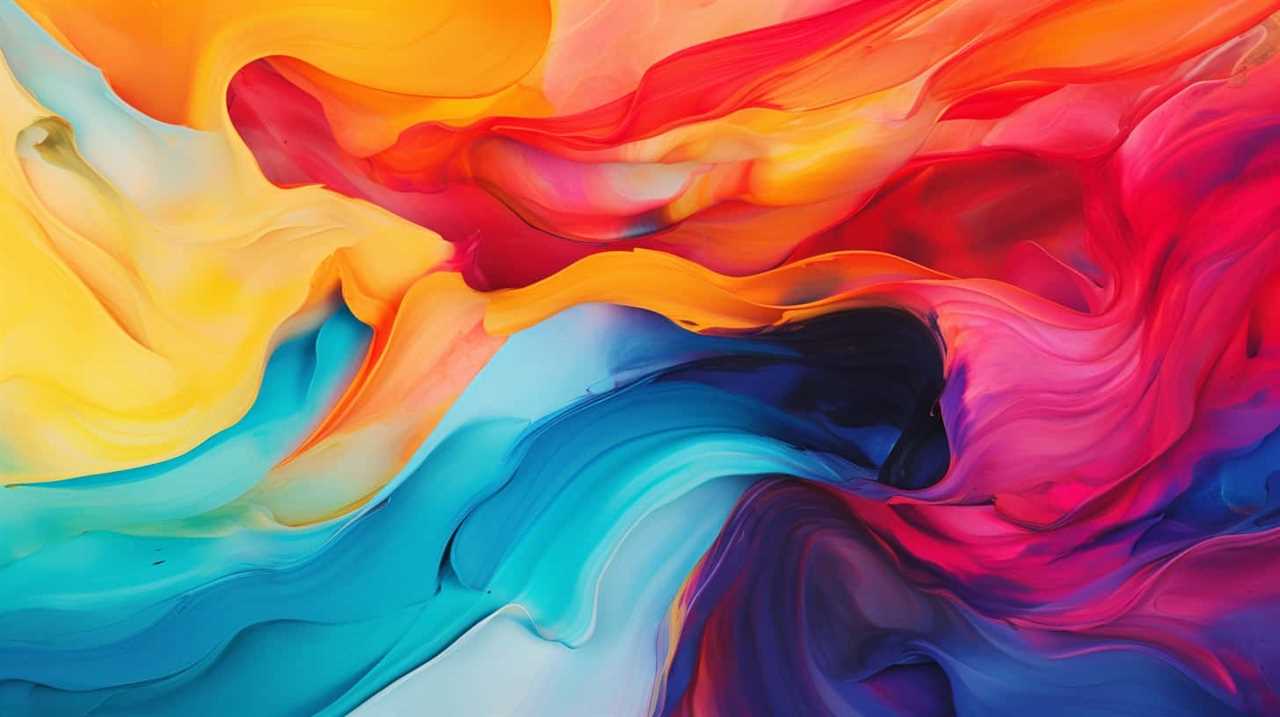
- Experimentation: Dare to try new techniques, materials, or subject matters that you haven’t explored before. This willingness to step outside your comfort zone can lead to unexpected discoveries and breakthroughs.
- Interdisciplinary Collaboration: Seek opportunities to collaborate with artists from different disciplines. By merging ideas and perspectives from diverse fields, you can create innovative and thought-provoking works that defy traditional categorizations.
- Questioning Assumptions: Challenge the assumptions and norms that surround your chosen medium. Ask yourself why things are done a certain way and consider alternative approaches. By questioning the conventional wisdom, you open up possibilities for fresh and unique artistic expressions.
Originality Versus Imitation in Art
As you delve into the realm of originality versus imitation in art, it’s important to consider the impact of embracing your own unique perspective and pushing the boundaries of artistic convention.
In contemporary art, originality isn’t simply a desirable trait, but a necessary one. Artists who strive for originality challenge the status quo and push the boundaries of what’s considered conventional. They bring fresh perspectives and innovative ideas to the art world, inspiring others and driving the evolution of artistic expression.
Imitation, on the other hand, can have a detrimental effect on artistic integrity. When artists imitate the style or ideas of others without adding their own unique voice, they risk diluting the authenticity of their work. It becomes difficult to distinguish their art from that of others, and the true essence of their creativity is lost. Furthermore, imitation hinders the growth of the artist, as it keeps them confined within the limitations of what’s already been done.
In the pursuit of originality, artists have the opportunity to create powerful and thought-provoking works that challenge societal norms and provoke meaningful conversations. By embracing their own unique perspective and refusing to imitate others, artists can cultivate their own artistic identity and contribute to the ever-evolving landscape of contemporary art.
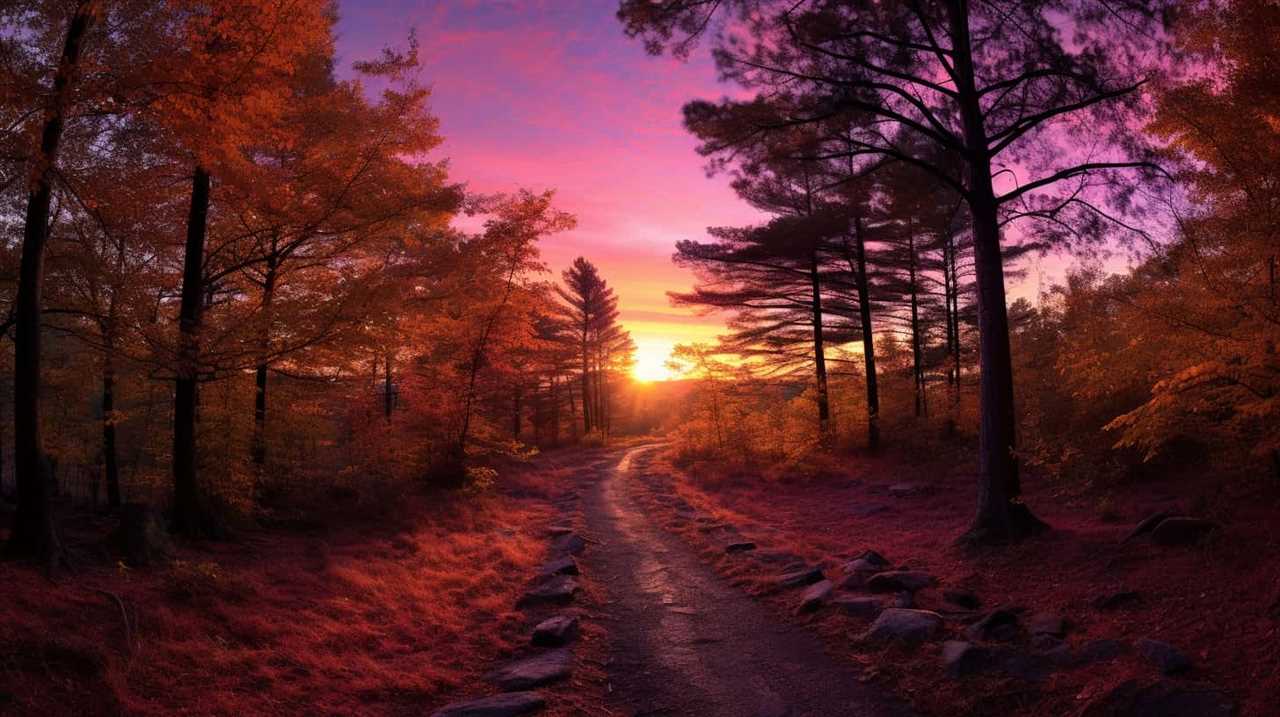
The Importance of Originality in Artistic Success
To achieve artistic success, it’s crucial that you prioritize originality in your work. Originality plays a significant role in artistic innovation and the relationship between originality and artistic authenticity is undeniable. Here are three reasons why originality is important for artistic success:
- Distinguishing yourself: Originality sets you apart from other artists and helps you establish a unique artistic identity. In a saturated art world, being original allows you to stand out and attract attention from audiences, critics, and potential buyers. It gives you a competitive edge and increases your chances of success.
- Fostering creativity: Embracing originality in your work encourages creative thinking and exploration. When you focus on being original, you’re more likely to push boundaries, experiment with new techniques, and challenge traditional norms. This creative freedom leads to innovative artworks that captivate and inspire others.
- Building a loyal audience: Authenticity is highly valued by art enthusiasts who seek meaningful and thought-provoking experiences. Originality in your work builds trust and credibility with your audience. When people recognize your unique voice and perspective, they’re more likely to become loyal supporters and advocates for your art.
Cultivating Originality in Your Artistic Practice
To cultivate originality in your artistic practice, it’s crucial to first embrace your personal artistic style. This involves understanding your unique perspective, strengths, and interests, and infusing them into your work.
Additionally, exploring unconventional creative approaches can help you break free from traditional norms and discover new ways of expressing yourself. By pushing boundaries and challenging the status quo, you can foster a sense of uniqueness and innovation in your art.
Embracing Personal Artistic Style
Discovering and embracing your personal artistic style is essential for cultivating originality in your artistic practice. Your unique style is what sets you apart from other artists and allows you to express your individuality. Embracing your artistic freedom enables you to break free from traditional norms and explore new possibilities.
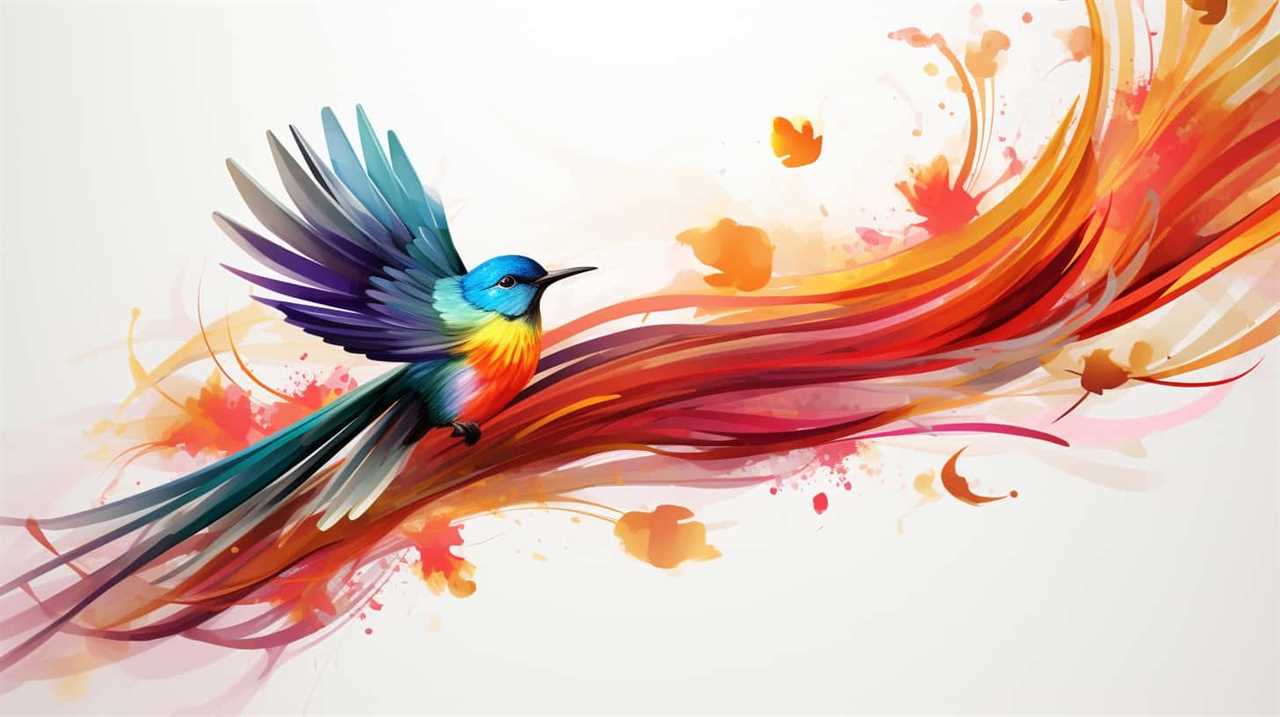
Here are three key reasons why embracing your personal artistic style is crucial:
- Authenticity: Embracing your personal style allows you to create art that reflects your true self and experiences. It helps you develop a genuine voice that resonates with your audience.
- Innovation: By embracing your personal style, you open the door to innovation and experimentation. You can push the boundaries of your art, explore new techniques, and take risks that lead to groundbreaking creations.
- Recognition: Developing a distinct artistic style helps you build a recognizable brand and stand out in a crowded artistic landscape. It allows you to create a consistent body of work that attracts attention and differentiates you from others.
Embracing your personal artistic style isn’t just about self-expression; it’s a pathway to originality and success in your artistic journey.
Exploring Unconventional Creative Approaches
Get ready to dive into new artistic horizons by exploring unconventional creative approaches that will help you cultivate originality in your artistic practice.
In order to foster innovation and stand out from the crowd, it’s crucial to embrace unconventional techniques and mediums. By stepping outside the boundaries of traditional artistic methods, you can tap into unexplored territories and unlock a world of possibilities.
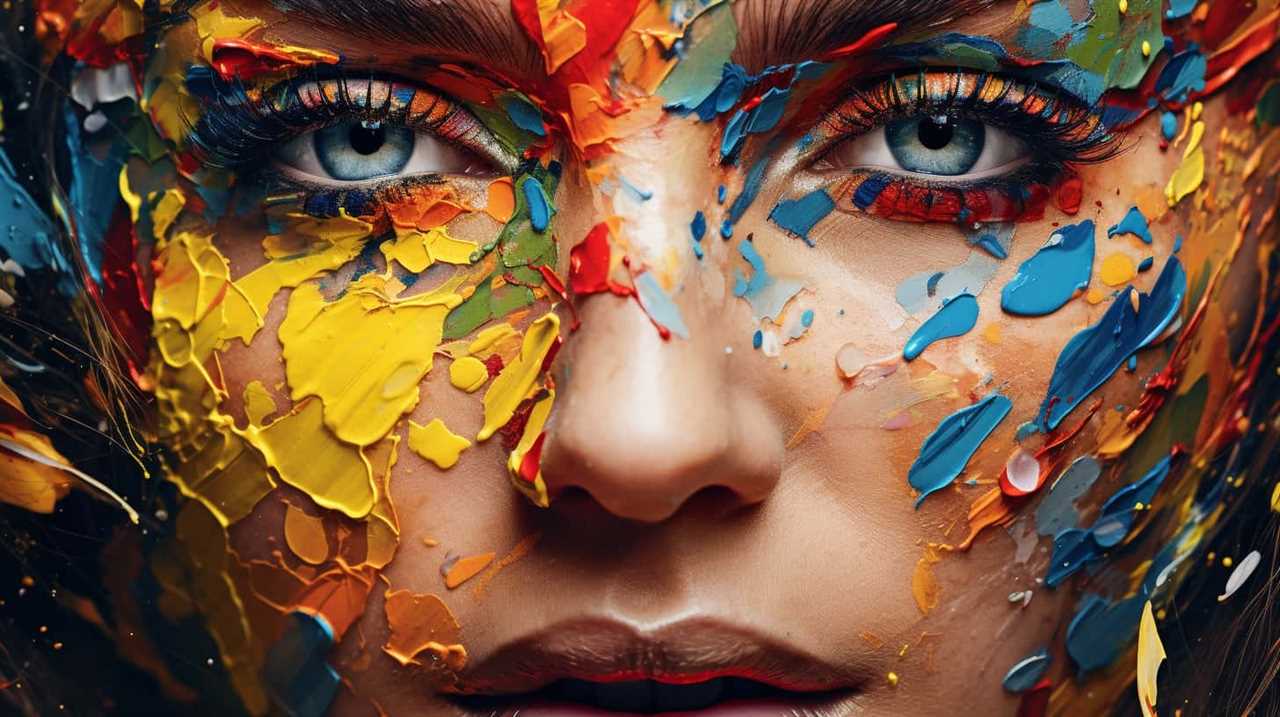
Experiment with unconventional techniques such as collage, assemblage, or even digital manipulation to create unique and thought-provoking artwork. Additionally, consider using unconventional mediums like found objects, alternative materials, or even unconventional surfaces to add an unexpected twist to your creations.
These unconventional creative approaches won’t only challenge your artistic skills but also push you to think outside the box and create truly one-of-a-kind pieces.
Now, let’s delve into the next section and explore how these unconventional approaches can foster unique artistic expression.
Fostering Unique Artistic Expression
By embracing unconventional creative approaches, you can cultivate originality in your artistic practice, allowing your unique artistic expression to flourish. Fostering unique artistic expression is essential in creating innovative and groundbreaking works of art. Here are three ways to nurture your individuality and encourage artistic risk-taking:
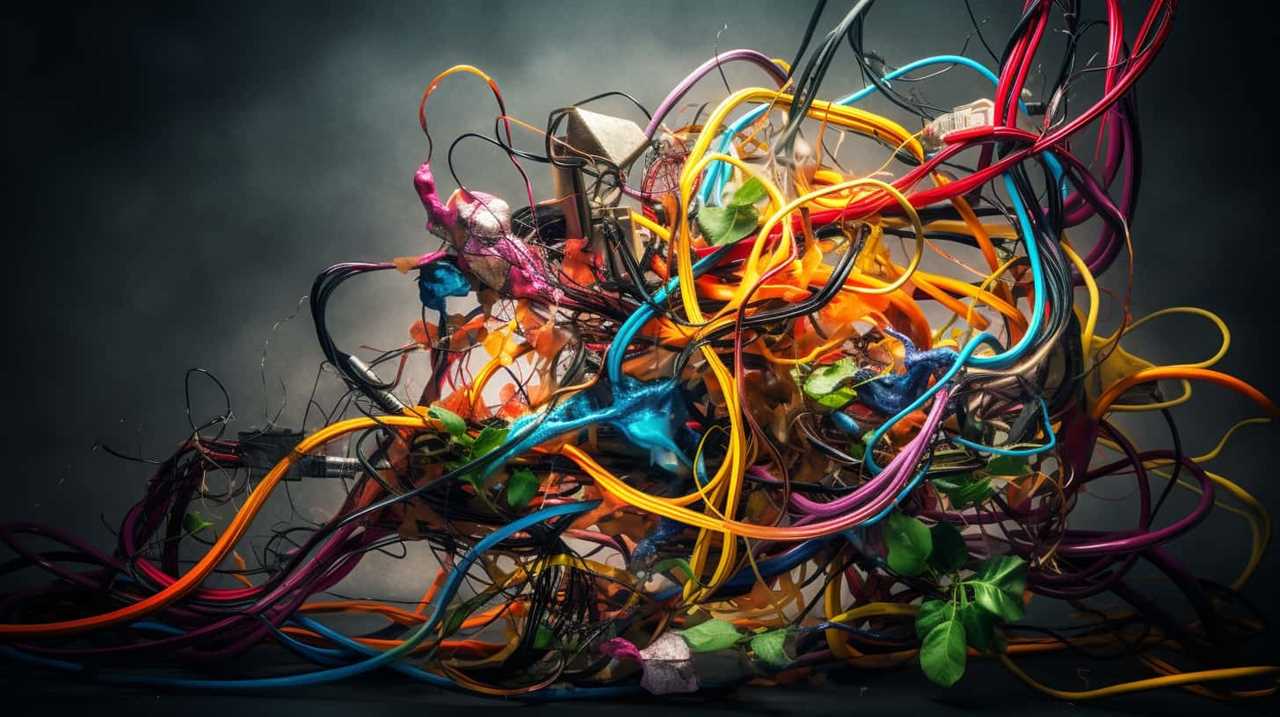
- Embrace experimentation: Push the boundaries of your artistic practice by exploring new techniques, materials, and mediums. Experimentation allows you to break free from traditional norms and discover new ways of expressing your ideas.
- Embrace vulnerability: Take risks and step out of your comfort zone. Embracing vulnerability allows you to tap into your authentic self and create art that’s truly unique to you. It’s through taking risks that you can uncover new perspectives and push the boundaries of your creativity.
- Embrace collaboration: Collaborate with other artists, musicians, or writers who’ve different perspectives and artistic styles. By working together, you can merge your ideas and skills, resulting in innovative and original artworks.
Frequently Asked Questions
How Does Originality Impact an Artist’s Personal Journey and Growth?
In your personal journey as an artist, originality plays a vital role in your evolution and creative development. It pushes you to explore new ideas, challenge conventions, and create innovative works that leave a lasting impact.
Can Artists Find Inspiration From Non-Original Sources and Still Create Original Work?
Artists can find inspiration from non-original sources and still create original work by repurposing inspiration and incorporating the influence of past masters. This allows for a unique blend of ideas that pushes the boundaries of innovation.
What Are Some Common Misconceptions About Originality in Art?
Misunderstanding originality in art can hinder the importance of artistic influence. It’s a common misconception that being original means creating something completely new. However, true originality lies in blending influences and creating something unique.
How Does the Concept of Originality Vary Across Different Art Mediums?
In photography, originality lies in capturing unique perspectives, while in dance, it involves blending traditional and contemporary styles. The concept of originality varies across art mediums, allowing for innovation and inspiring artistic creations.

Is Originality Subjective or Can It Be Objectively Measured in Art?
Measuring originality in art is subjective since each person has their own interpretation. However, it can be evaluated by considering the uniqueness, creativity, and innovation in an artwork. This subjectivity fuels artistic inspiration and drives the desire for innovation.
Conclusion
In conclusion, originality is the fuel that ignites artistic inspiration. It’s the driving force behind the exploration of new ideas and the expression of unique perspectives. Without originality, art becomes stagnant, lacking the power to captivate and evoke emotion.
By embracing originality, artists can push the boundaries of creativity and achieve artistic success. So, dare to be original and let your imagination soar, for it’s through originality that true artistic brilliance can be achieved.
Joy, as our Editor in Chief, ensures the highest standard of content. Her talent in writing is complemented by her attention to detail and passion for literature and culture. Joy’s expertise and love for the English language shine through in her editorial work, making each piece a testament to quality and clarity.





